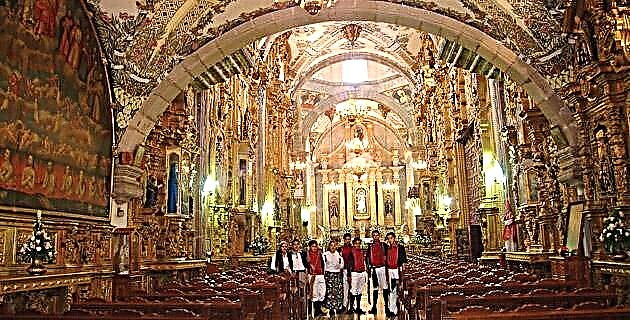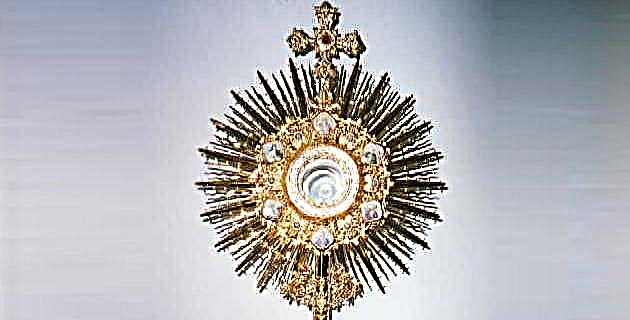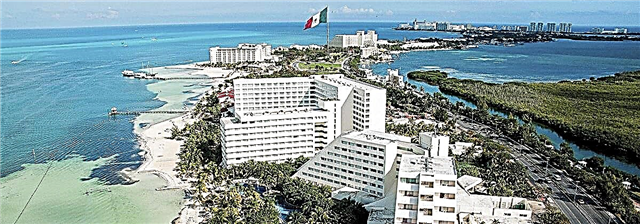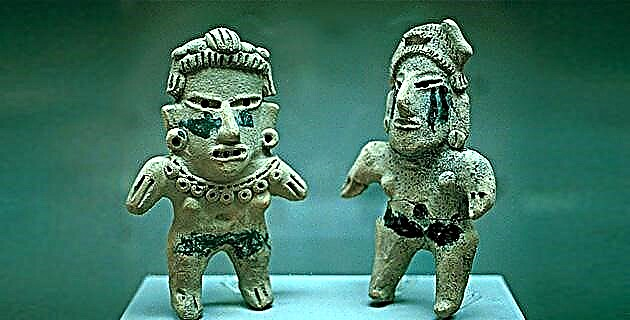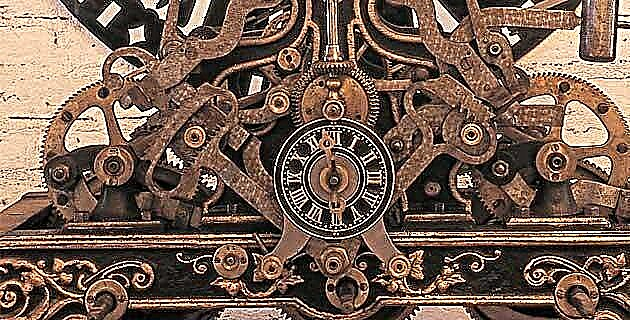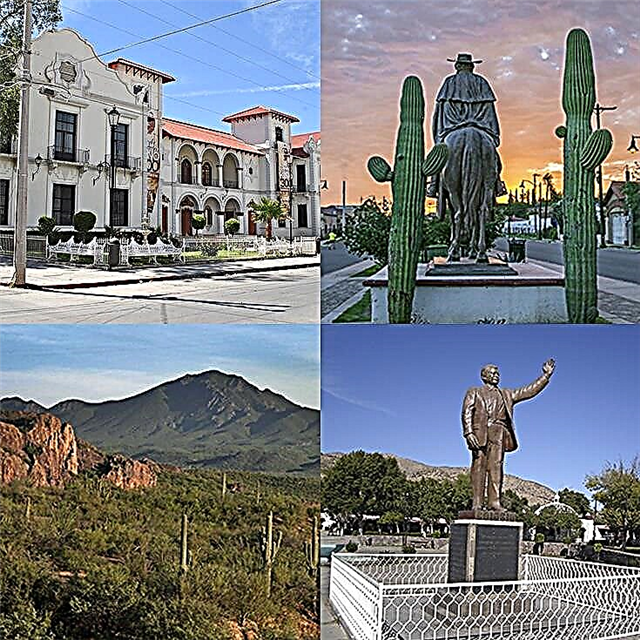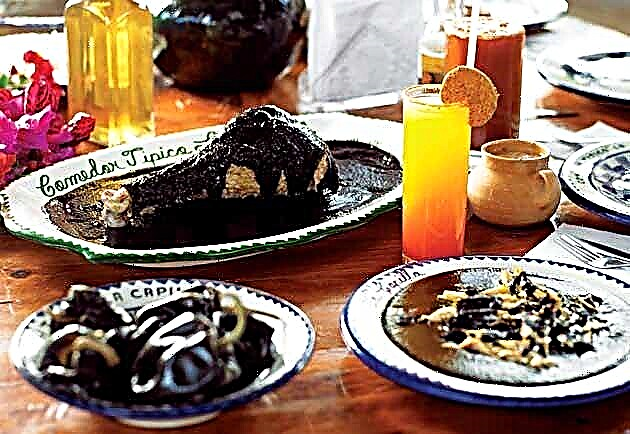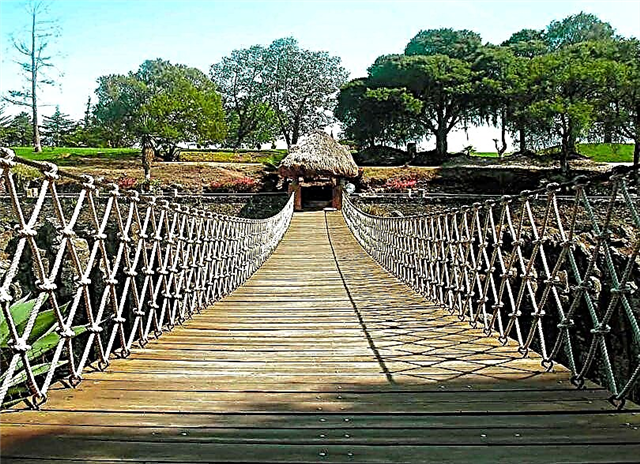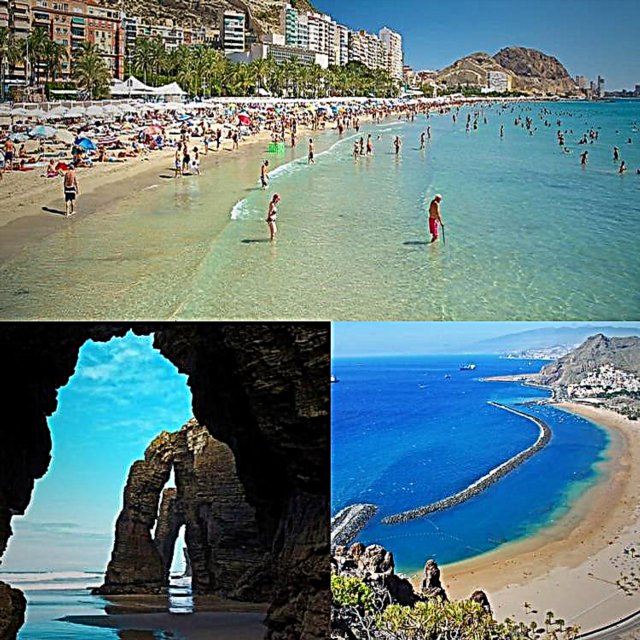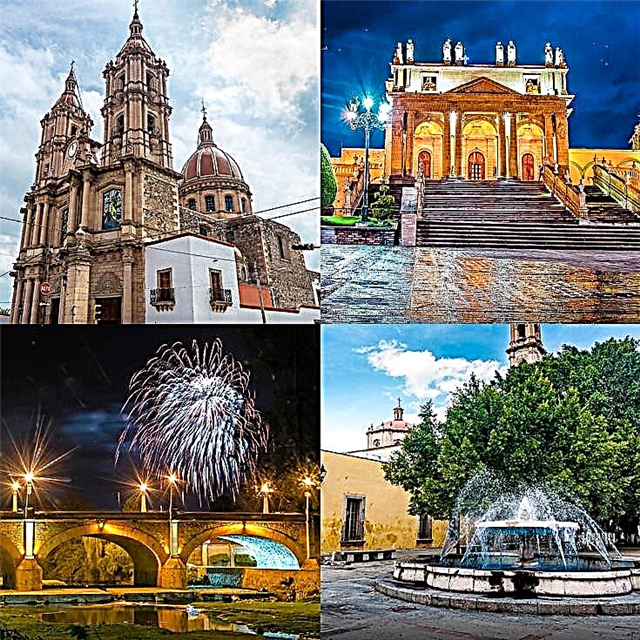Lagos de Moreno has one of the most valuable architectural heritages in Mexico. We offer you this complete guide so that you know all the monuments of interest of this attraction Magic Town Jalisco.
1. Where is Lagos de Moreno?
Lagos de Moreno is the head city of the municipality of the same name, located on the northeastern side of the state of Jalisco. It was part of the Camino Real de Tierra Adentro, the legendary 2,600 km trade route. that linked Mexico City with Santa Fe, United States. Lagos de Moreno is full of monuments and its old bridge and its historic center are Cultural Heritage of Humanity. In 2012, the city was declared a Magical Town because of its architectural heritage and viceregal estates.
2. What weather awaits me in Lagos de Moreno?
The city of Jalisco has an excellent climate, cool and not very rainy. The average temperature in the year is 18.5 ° C; descending to the range of 14 to 16 ° C in the winter months. In the warmer months, from May to September, the thermometer rarely exceeds 22 ° C. Only 600 mm of water falls a year on Lagos de Moreno, almost all concentrated in the period June - September. A rain between February and April is a rare event.
3. What are the main distances there?
Guadalajara is 186 km away. from Lagos de Moreno, heading northeast towards Tepatitlán de Morelos and San Juan de Los Lagos. The closest large city to Lagos de Moreno is León, Guanajuato, which is located 43 km. by Federal Highway Mexico 45. Regarding the capitals of the border states with Jalisco, Lagos de Moreno is 91 km. from Aguascalientes, 103 km. from Guanajuato, 214 km. from Zacatecas, 239 km. from Morelia, 378 km. from Colima and 390 km. from Tepic. Mexico City is 448 km away. of the Magic Town.
4. What are the main historical features of Lagos de Moreno?
When the Hispanic settlement was founded in 1563, it could not gather the 100 families required to achieve the rank of city and had to settle for the title of Villa de Santa María de los Lagos. The town was built to provide protection to the Spaniards traveling north, as the fierce Chichimecas, the famous "Bravos de Jalisco" attacked frequently. Its current official name was decreed on April 11, 1829, to honor the Insurgent Pedro Moreno, the most famous Laguense. Graduation as a city came in 1877.
5. What are the main attractions of Lagos de Moreno?
The architecture of Lagos de Moreno is an offering to the senses. The bridge over the Río Lagos, the Garden of the Constituents, the Parish of La Asunción, the Temple of Calvario, the Rinconada de Las Capuchinas, the Municipal Palace, the José Rosas Moreno Theater, the Montecristo house, La Rinconada de La Merced, the School of Art and Crafts, the Temple of the Rosary, the Temple of La Luz and the Temple of the Refuge, are monuments that must be visited. Also its museums and beautiful haciendas, some of which have been converted into comfortable hotels.
6. What is the Puente del Río Lagos like?
This serene and magnificent quarry bridge over the Lagos River is a World Heritage Site. Due to the vicissitudes of Mexican history, its construction period spanned more than 100 years, between 1741 and 1860, and the first retinue of honor that crossed it was led by President Miguel Miramón. Its beauty comes from the masterful stonework and its round arches. After its opening, an expensive toll was charged to cross it, so in times of drought or low water, people preferred to cross the river bed. From there came the funny text of a plaque put up by the mayor: «This bridge was built in Lagos and you pass over it»
7. What do I see in the Garden of the Constituents?
This square in the historic center of Lagos de Moreno, called the Garden of the Constituents, pays homage to Mariano Torres Aranda, Albino Aranda Gómez, Jesús Anaya Hermosillo and Espiridión Moreno Torres, deputies in the Constituent Congress of 1857. The quarry-carved busts of the 4 civil heroes are found in the 4 corners of the square. The garden has beautifully pruned groves and a French kiosk that is one of the main meeting points in the town.
8. What are the attractions of the Parroquia de La Asunción?
The parish church of Nuestra Señora de la Asunción is another architectural symbol of Lagos de Moreno. It is the largest temple in the town, distinguished by its baroque pink quarry façade, its two 72-meter high towers and its dome. Inside this 18th-century church there are more than 350 sacred relics. It also has catacombs that can be visited.
9. What stands out in the Temple of Calvary?
This majestic temple inspired by St. Peter's Basilica in Rome was declared a World Heritage Site by UNESCO. The temple located on Cerro de la Calavera is accessed by elegant stairways with stone handrails and flower vase finishes, and the neoclassical façade has three semicircular arches and six Tuscan columns. At the top of the facade there are 10 sculptures of saints carved in stone. In the beautiful interior, the three naves with rib vaults and the sculpture of the Lord of Calvary stand out.
10. What's in the Rinconada de Las Capuchinas?
It is an architectural group made up of 3 monuments, the Temple and Old Convent of Capuchinas, the House of Culture and the Agustín Rivera House Museum, with a square in the middle of the complex. The convent has a façade with buttresses decorated in the Mudejar style, balconies with wrought iron railings and traditional lanterns. The interior of the complex presents arcades on two levels and has neoclassical altarpieces and pictorial works from the 19th century.
11. What is the House of Culture like?
After the Capuchin nuns were exclaustrated in 1867, the conventual complex was left empty and two years later, the building in which the cultural house operates today became the Boys' Lyceum. After a reconstruction process, this architectural jewel was designated the headquarters of the House of Culture of Lagos de Moreno. In the cube of the staircase there is an allegorical mural to the Insurgent Pedro Moreno and in one corner of the patio are the remains of a doorway that communicated with the convent garden.
12. What can I see in the Agustín Rivera House Museum?
Agustín Rivera y Sanromán was a notable priest, historian, polygraph and writer, born in Lagos de Moreno on February 29, 1824. Rivera spent part of his career investigating life and vindicating the main local hero, the Insurgent Pedro Moreno. In the sober 18th century house, with stonework and wrought iron balconies, which was the residence of Agustín Rivera in the Rinconada de Las Capuchinas in Lagos de Moreno, there is now a small museum dedicated to temporary exhibitions.
13. What is there to see in the Municipal Palace?
This elegant two-story building was part of the Town Hall from which the town hall was administered and has a façade covered with quarry, with the coat of arms of the Mexican Republic in the center of the triangular pediment that tops it off. On the interior walls of the staircase there is a mural painting by the artist Santiago Rosales that is an allegory to the struggle of the Laguense people.
14. What is the interest of the José Rosas Moreno Theater?
This beautiful building in an eclectic style, although mainly neoclassical, is located at the back of the parish church of Nuestra Señora de la Asunción and is named after the 19th century poet José Rosas Moreno, a relative of the Insurgent Pedro Moreno. Construction began in 1867 and was completed during the Porfiriato era. Historians have not agreed on its opening date, although the most widely accepted is April 1905, with an opera premiere Aidaby Giuseppe Verdi.
15. What is exhibited in the Museum of Sacred Art?
This 5-room museum located next to the Parroquia de Nuestra Señora de la Asunción, displays various pieces used in Lagos de Moreno in the trades and other Catholic rites in the last 400 years, as well as paintings from the 17th and 18th centuries. It also has an interactive space in which cultural issues are discussed with audiovisual resources, including charrería, local architecture and the main characters in the history of the town.
16. What is Casa Montecristo like?
This house of great beauty was the place where the traditional painter Manuel González Serrano was born on June 14, 1917, as a scion of a family of the Laguense high bourgeoisie. The building is the depository of fine details of art nouveau in doors, balconies and windows. It is currently the headquarters of Antiguedades Montecristo, one of the most prestigious houses in central Mexico in its specialty. The most valuable objects, such as furniture, doors and planks, come from houses and farms in the town.
17. What's in the Rinconada de la Merced?
This beautiful Laguense corner is formed by a two-level esplanade surrounded by various buildings, among which the Temple and Convent of La Merced, the Juarez Garden and the birthplace of Salvador Azuela Rivera, distinguished humanist, jurist and writer from La twentieth century. The church of La Merced began to be built in 1756 and stands out for its facade with Corinthian columns and its slender three-section tower with Tuscan, Ionic and Corinthian lintels.
18. What is the School of Arts and Crafts like?
It began as a school of first letters for girls in the first half of the 19th century. In the beautiful one-story house, its semicircular arches and external windows with stonework, decorated with floral motifs, stand out. Since 1963 the building has been the headquarters of the Lagos de Moreno School of Arts and Crafts.
19. What do I see in the Temple of the Rosary?
This Mannerist-style church was built during the 18th century and is architecturally distinguished by its buttresses. The façade of the original temple has survived, since the atrium and the neoclassical tower were added later. José Rosas Moreno, a great figure of local poetry in the 19th century, is buried in the Temple of the Rosary.
20. What is the Temple of Light like?
This attractive pink stone church consecrated in 1913 to the Virgen de la Luz, has a three-axis portal with a clock at the top. The two slender towers of two bodies are crowned with lanterns and the beautiful dome is similar to that of the Church of the Sacred Heart in the Montmartre district of Paris. Inside the allegorical frescoes to the life of the Virgin, painted on the pendentives, stand out. It also has two side chapels with beautiful images.
21. What is distinctive about the Iglesia del Refugio?
The construction of this temple began in the 1830s at the initiative of José María Reyes, alms collector from the Convent of Guadalupe, Zacatecas, and a faithful devotee of the Virgen del Refugio. The temple is in the frugal neoclassical style, with two two-section towers, a portal with a semicircular arch and an octagonal dome. Reyes is buried in the church he helped build.
22. What is the history of the House of Count Rul?
This elegant viceregal house located on Calle Hidalgo in the historic center of Lagos de Moreno, belonged to the Obregón family, related to Count Rul. Antonio de Obregón y Alcocer owned the famous La Valenciana silver mine, a deposit so rich that it provided two out of every three tons of the precious metal extracted in New Spain. The two-story baroque house is distinguished by the ironwork of its balconies, gargoyles and colonial lanterns. The internal staircase is arranged in a graceful ramp at an angle.
23. Why is Café Cultural Terrescalli so mentioned?
More than a restaurant and cafe, it is a beautiful cultural space located at Alfonso de Alba 267, 5 minutes from the historic center of Lagos de Moreno. It started as a visual arts gallery on the work of the painter and sculptor Carlos Terrés and also has a wine boutique, including one with the Terrés label; areas for workshops and cultural forum. In the restaurant, the star dish is the traditional pacholas from Lagos de Moreno. It opens from Tuesday to Sunday between 15:30 and 23:00.
24. What are the main farms?
During the viceregal era, every Jalisco family of ancestry had a rest estate with a "big house". In Lagos de Moreno a few estates were built, several of which have been fairly well preserved and have been converted into hotels and places for social events. . These haciendas include Sepúlveda, La Cantera, El Jaral, La Estancia, Las Cajas and La Labor de Padilla. If you are thinking of getting married, ask for your budget and perhaps you will dare to marry in one of these spectacular estates.
25. What is the local crafts like?
One of the few communities dedicated to making tule crafts that remain in Mexico is that of the indigenous town of San Juan Bautista de la Laguna. Laguenses also make beautiful ornaments with corn husks and raffia. They are skilled saddlers, making saddles and pieces of charrería. Likewise, they mold utensils and striking clay figures. These souvenirs are available in local shops.
26. What is Laguense cuisine like?
The culinary art of Lagos de Moreno is a fusion of ingredients, techniques and recipes from pre-Hispanic indigenous cuisine with that brought by the Spanish, with African touches provided by the slaves. In the fertile lands of Lague, crops are planted and animals are raised that are later converted into local delicacies, such as pacholas, mole de arroz, birria tatemada de borrego and pozole rojo. Lagos de Moreno is also known for its artisan cheeses, creams and other dairy products.
27. Where do I stay in Lagos de Moreno?
Hacienda Sepúlveda Hotel and Spa is located very close to Lagos de Moreno, on the road to El Puesto, and is one of the viceregal farms converted into lodging. It has a renowned spa, delicious food and various entertainment possibilities such as horse-drawn carriage rides, biking and hiking. La Casona de Tete has quaintly decorated rooms in an old Jalisco setting. Hotel Lagos Inn is excellently located on Calle Juárez 350 and has clean and spacious rooms. You can also stay at Hotel Galerías, Casa Grande Lagos, Posada Real and La Estancia.
28. What are the best places to eat?
La Rinconada works in a beautiful house in the historic center and specializes in Jalisco, Mexican in general and international food. Andén Cinco 35 offers Argentine and international food and its cuts of meat are generous. La Viña serves typical Mexican food and excellent opinions are heard about its molcajete with meats; They also have live music. Santo Remedio Restaurant is a family place, inexpensive and with a beautiful decoration. If you fancy a pizza you can go to Chicago’s Pizza.
We hope that very soon you will be able to walk the streets of Lagos de Moreno, full of historical monuments, and that this guide will be useful for your better understanding. See you soon.


